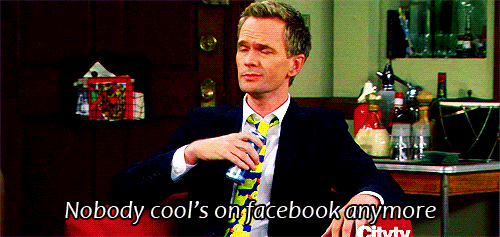by Vincenzo Marino – translated by Roberta Aiello
Freelance: a sustainable model?
This week on PBS MediaShift Josh Stearns discusses freelance work, a topic often overlooked in journalistic debate. With the gradual reduction of the number of journalists in the newsroom, the figure of the freelance has become crucial, allowing newspapers to purchase work at lower prices and without particular obligation. In recent years, Stearns highlights, only a few published reports were able to frame the issue, but now – thanks to cases like that of Nate Thayer – the issue is back in the limelight.
In short, the future of freelancers is “economically dismal“. “It’s increasingly impossible to make a living as a freelancer as the price of ‘content’ drops”, Jay Rosen admits on Twitter. The MediaShift article tries to focus on the undervalued issue of security, regarding both personal (without any assistance) and data and systems used (personal and, for this reason, more vulnerable infrastructures). “The atomization of news doesn’t just apply to content, but is a lived condition for huge numbers of individual journalists who have had to rethink what it means to work in the news”, Stearns concludes.
The message was clear even to the journalists interviewed by Noah Davis of The Awl. In an article titled “I Was Paid $12.50 An Hour To Write This Story“, Davis tries to unravel the current condition of American freelancers, inserting it in an editorial context – especially digital – that is extremely depressing. The described system is in continuous loss, not able to remunerate the freelancers as they deserve, failing to make profitable online this economic relationship. The author explains it well: “Assume an editor pays a writer $100. Taking as a random decent example a $5 CPM (every thousand impressions, A/N), the article would need 20,000 pageviews to make that $100”. That’s tough. It is a scenario with fewer and fewer professional journalists (-15,000 units since 1997), which neither recognizes quality nor guarantees significant returns, even for large groups. Davis concludes by recounting how he has managed so far to succeed. The article will be worth $250. He believes its value is higher, but admits that he would accept even less.
Journalism with drones
Research conducted by Digital Journalism entitled “New perspectives from the sky – Unmanned aerial vehicles and journalism” (edited by Tremayne Clark and the University of Texas) has been published. The study analyzes the reflections on the journalistic profession of the use of so-called ‘drones’ (that can be bought on Amazon) which are different devices from those used for war and espionage. They can be controlled remotely to capture or collect – for example – samples or evidence moving quickly up to hundreds of meters high. The use of these quadricopters – as witnessed in the document – is constantly expanding, proving to be an excellent method to bring interesting panoramas or revealing public gatherings (from Occupy Wall Street to Taksim Square in recent days) or natural disasters. Its use, however, imposes some ethical, technical and professional questions.
In an article written by Rachel McAthy of Journalism.co.uk, who cites the report “Remotely Piloted Aircraft Systems and Journalism” by Robert Picard (of the Oxford University Reuters Institute), one of the first observations is about legality and regulation. “Anything that goes into the air comes under the jurisdiction of aviation regulators,” Picard warned, but the problem is that “most media know absolutely nothing about aviation law.” Not to mention that such means are able to go anywhere, overcoming limitations and getting closer to people, invading privacy and the right to privacy. The safety issues of the reporter are also to be considered because he can still be detected and tracked when, even at a distance, his cover is revealed. In conclusion, Mark Corcoran, the senior editor of the Australian ABC, explains that drones “won’t replace the journalist on the ground” but they can be useful to “reduce our exposure to risk.”
In this regard, the “Society of Professional Drone Journalists” – quoted by Brian Resnick on National Journal – has drawn up a “Hierarchy of ethics“. A pyramid of priority on the use of drones in journalism considering at the base the need of their use (in other words: it must really be worth the effort), then, going up, the observance of safety measures, regulations and public spaces, personal privacy and the rules of traditional journalistic ethics.
Facebook and the news

According to research published by the Northwestern University in Qatar, Facebook would be the third most frequently consulted source of news throughout the Arab world. The study, which recorded the responses of more than 10,000 people from Egypt to the United Arab Emirates, showed interesting data especially with regard to the cases of countries such as Tunisia, in which the social network of Palo Alto appears to be the most informative accredited source with 52% of positive feedback. Taking an average of all countries, it predictably emerges with the supremacy of Al Jazeera, followed by Al Arabiya and Facebook.
The Tunisian figure is particularly interesting – according to Justin Martin, professor of journalism – because it shows a higher level of social media activities compared to the United States and Europe due to a greater skepticism of traditional media and a strong critique of the status quo – which in recent years has resulted in the so-called Arab Spring. In this regard, it is also worth mentioning the result of Twitter, quoted – only marginally – in the answers from Saudi Arabia and Bahrain.
Otherwise, the intentions of Facebook to accreditate itself also – maybe above all – as a center of retrieval of news and aggregation of feeds is becoming more and more evident. Only this week Zuckerberg’s company launched Twitter style hashtags and the new video capabilities of Instagram, in full competition with Vine. That’s not all. Another project has been discussed, which moves precisely towards this strategy: that of social reader. The race to replace Google Reader, that will cease its service by July 1st, has triggered a real challenge between Feedly, the reinvented Digg and Facebook, interested in becoming a hub of information for users and selling new data to advertisers. Eliza Kern of GigaOm criticizes this opportunity because she says it is now used to work on social networks on speed and not on the storage of feed of bookmarks – the reading of which, moreover, may become public and accessible to one’s own social circles. This is something that users have never liked much, considering the failure of autoposting tools such as that of the Washington Post.
Knowing how to read social data



Meanwhile, newsrooms have adapted to this situation. On Wednesday, Rachel McAthy of Journalism.co.uk published a guide to how newspapers can work with social data to target their publishing strategy, since being able to interpret these numbers – according to Michael Roston of the New York Times – allows one to become first and foremost a better storyteller. Just last week, however, Twitter ‘opened’ its analytics data to the public, making it easier to understand one’s own online performances. The products suggested by the article include SocialFlow, Sprout, Bitly and Chartbeat. At Metro, as explained by its social media and community manager Richard Moynihan, the social media team also looks at how the users consult the page, the scrolls, time of permanence, the behavior with texts and videos, giving great importance to the demographic aspect – data taken from the pages of Facebook, to know always what, how and when to publish content on the site.
It is a task that often refers to the marketing wing of the newsroom or to a few ‘insiders’, but, according to the social media manager of Metro, it should be made available to all in order to ensure consistent coverage of social media from the editorial point of view. Moynihan, however, gives interesting advice about being patient (“not all stories are made for social”), while Roston of the New York Times reminds us how important it is to work on headlines. In an online production environment oriented to the construction of seo-oriented headlines, Roston reminds us that content structured for optimization on search engines does not always run on social networks. It is necessary to know how to be able to adapt, to be prepared to read and accept the mood that comes from the network and try again and again.
There is no “magic formula”, Amanda Zamorano of ProPublica concludes, it is necessary to “experiment and figure out what works for you and your audience, and frankly, your journalism”.


